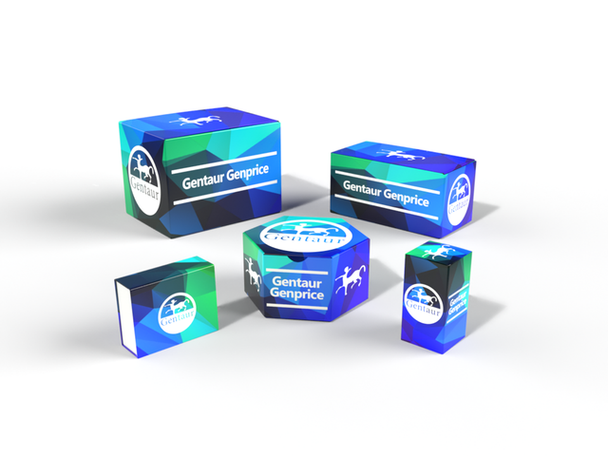749
Rat Advanced glycation end products (AGEs) ELISA Kit | KTE100353
- SKU:
- 749-KTE100353
- Availability:
- Usually ships in 5 working days
Description
Rat Advanced glycation end products (AGEs) ELISA Kit | KTE100353 | Gentaur UK, US & Europe Distribution
Application: This Rat Advanced glycation end products (AGEs) ELISA Kit employs a two-site sandwich ELISA to quantitate AGEs in samples. An antibody specific for AGEs has been pre-coated onto a microplate. Standards and samples are pipetted into the wells and anyAGEs present is bound by the immobilized antibody. After removing any unbound substances, a biotin-conjugated antibody specific for AGEs is added to the wells. After washing, Streptavidin conjugated Horseradish Peroxidase (HRP) is added to the wells. Following a wash to remove any unbound avidin-enzyme reagent, a substrate solution is added to the wells and color develops in proportion to the amount of AGEs bound in the initial step. The color development is stopped and the intensity of the color is measured.
Detection Method: Colorimetric
Conjugate: N/A
Sample Type: Cell culture supernatants#Serum#Plasma#Other biological fluids
Assay Type: Multiple steps standard sandwich ELISA assay with a working time of 3-5 hours. It depends on the experience of the operation person.
Kit Component: • Rat Advanced glycation end products microplate
• Rat Advanced glycation end products standard
• Rat Advanced glycation end products detect antibody
• Streptavidin-HRP
• Standard diluent
• Assay buffer
• HRP substrate
• Stop solution
• Wash buffer
• Plate covers
Features & Benefits: Rat Advanced glycation end products (AGEs) ELISA Kit has high sensitivity and excellent specificity for detection of Rat AGEs. No significant cross-reactivity or interference between Rat AGEs and analogues was observed.
Calibration Range: Please inquire
Limit Of Detection: Please inquire
Usage Note: • Do not mix components from different kit lots or use reagents beyond the kit expiration date.
• Allow all reagents to warm to room temperature for at least 30 minutes before opening.
• Pre-rinse the pipet tip with reagent, use fresh pipet tips for each sample, standard and reagent to avoid contamination.
• Unused wells must be kept desiccated at 4 °C in the sealed bag provided.
• Mix Thoroughly is very important for the result. It is recommended using low frequency oscillator or slight hand shaking every 10 minutes.
• It is recommended that all samples and standards be assayed in duplicate or triplicate.
Storage Instruction: The unopened kit should be stored at 2 - 8°C. After opening, please store refer to protocols.
Shipping: Gel pack with blue ice.
Precaution The product listed herein is for research use only and is not intended for use in human or clinical diagnosis. Suggested applications of our products are not recommendations to use our products in violation of any patent or as a license. We cannot be responsible for patent infringements or other violations that may occur with the use of this product.
Background: Advanced Glycation End products (AGEs) are the result of a chain of chemical reactions after an initial glycation reaction. The intermediate products are known, variously, as Amadori, Schiff base and Maillard products, named after the researchers who first described them. Side products generated in intermediate steps may be oxidizing agents or not. "Glycosylation" is sometimes used for "glycation" in the literature, usually as 'non-enzymatic glycosylation.' AGEs may be formed external to the body (exogenously) by heating (e.g., cooking) sugars with fats or proteins; or inside the body (endogenously) through normal metabolism and aging. Under certain pathologic conditions (e.g., oxidative stress due to hyperglycemia in patients with diabetes), AGE formation can be increased beyond normal levels. AGEs are now known to play a role as proinflammatory mediators in gestational diabetes as well.
Alternative Names: AGEs
Search name: AGEs
Tag: AGEs






